From its headwaters in eastern Idaho and Wyoming, the upper tributaries of the Snake River boast some of the best fishing on the planet. The situation is much different downriver and across the state to the Oregon border. The once-mighty river dwindles to a trickle in places. Hot and full of pollution from agriculture and other industries, the river is plagued by algae outbreaks, killing fish and prompting warnings for humans and their pets to stay out of the water. The Snake River has defined much of the history in the region, and through “Stories of the Snake,” we bring to light the adventures and economic, historical, and cultural values this mighty river has provided for generations, and why stronger protections are needed to keep it this way.
For this final installment of ‘Stories of the Snake’, we interviewed Claudeo Broncho, a fish and wildlife policy representative for the Shoshone-Bannock Tribes and an enrolled Tribal member. Claudeo has worked on fish and wildlife issues for the Tribe for over 30 years and has a wealth of knowledge about the Tribe’s relationship to the Snake both past and present.
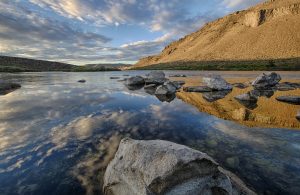
The Shoshone-Bannock Tribes have a word – “Dammen Baa” – that means “our water.” Water is a precious and sacred resource for the Tribe as the lifeblood for all living things. If water is the lifeblood, then the Snake River is undoubtedly the main artery of southern Idaho.
The Shoshone-Bannock Tribes are comprised of the eastern and western bands of the Northern Shoshone and the Bannock, or Northern Paiute, bands. Ancestral lands of both Tribes occupied vast regions of land encompassing present-day Idaho, Oregon, Nevada, Utah, Wyoming, Montana, and Canada. Tribal ancestors generally subsisted as hunters and gatherers, traveling during the spring and summer seasons to collect foods for use during the winter months. They hunted wild game, fished Idaho’s abundant and bountiful streams and rivers (primarily for salmon), and collected native plants and roots. Tribal fishing and hunting camps would have seasonally dotted the banks of the Snake River from the Tetons all the way to Hells Canyon to utilize this life-giving waterway.
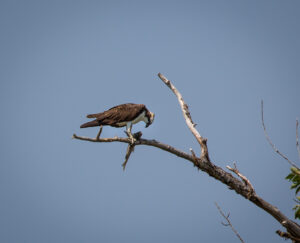
The Tribe’s seasonally nomadic lifestyle changed with the signing of the Fort Bridger Treaty of 1868, which established the Fort Hall Reservation in southeastern Idaho. At that time, the Tribal elders chose the Fort Hall Region to inhabit because of its proximity to the Snake River at its key water resources and fisheries. The reservation itself encompasses a stretch of the Snake River upstream of American Falls Reservoir. Additionally, the Fort Bridger Treaty memorialized the rights of Tribal members to hunt and fish on unoccupied lands of the United States – allowing Tribal members to continue to use their aboriginal homelands as their ancestors have done for thousands of years before them.
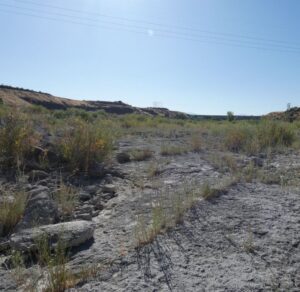
In the 1900s, the Snake River started to change drastically, with increasing human modifications to the river driven by the explosion of industrialized agriculture and the demand for hydropower. Prior to the Snake being dammed, huge numbers of salmon historically made the ~900 mile journey from the Pacific Ocean up the Columbia River and then the Snake River all the way as far as Shoshone Falls. Historically, these salmon were an incredible bounty for the Shoshone-Bannock. But with the construction of the Hells Canyon complex of hydropower dams beginning in the 1940s, the entire upper Snake River was blocked off to anadromous fish – cutting off one of the Tribes’ largest subsistence fisheries. These days, numerous dams and water diversions dot the length of the Snake River through southern Idaho, leaving behind a fundamentally different river than the one the Tribal ancestors knew and relied on for sustenance. In recent decades, the river has changed even further due to declining flows amidst long-term drought, overallocation of water, and declining water quality due primarily to agricultural pollution from farms, feedlots and dairies. In many places along the Snake, the water is no longer safe to swim in or to eat fish from.
Despite these challenging external circumstances, managing Snake River water as a sustainable resource remains a top priority for the Shoshone-Bannock Tribes due to its cultural and economic importance. Nowhere else along the Snake River is more emblematic of this emphasis than the Fort Hall Bottoms – a Tribal sacred site.
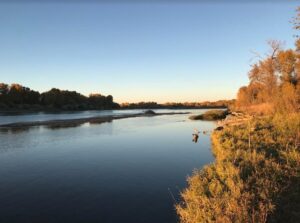
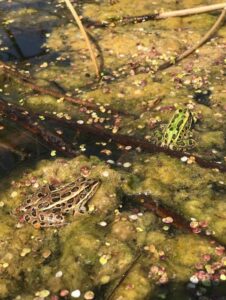
The Bottoms has been an oasis for the Shoshone-Bannock and their ancestors for generations; this area of recharging springs along the Snake was a key wintering ground for their people, with abundant drinking water from the springs, protection from the wind and snow, and abundant fish and wildlife to harvest for food. Today, the site remains very culturally significant to the Tribe and is still used for ceremonial purposes. It also remains an important spawning area for various resident fish, a key wintering area for waterfowl, and a blue ribbon fishery. The Tribe works to keep the Fort Hall Bottoms as pristine as possible, limiting non-tribal access, development, and other activities that could lead to degradation of this special place.
We thank the Shoshone-Bannock Tribes for their continued stewardship of the Snake River and its precious water resources. In order for future generations to be able to enjoy the Snake River and the surrounding land like we do, we must all do our part to clean up the Snake River. That means uniting to safeguard the river, hold polluters accountable, and promote efficient water use practices. Coming together through our shared experiences, we can find solutions for conservation that work well for all interest groups, and restore the Snake to a safe, swimmable, fishable condition, protecting this special place and the experiences it holds for now and for the future.
Regardless of how you like to recreate, or how you connect with the Snake River, there are so many reasons to protect it! Take action for the Snake River today by contacting Idaho’s elected officials, urging them to clean up the Snake. Sign up here to learn more about the Snake River and how you can help restore it.

